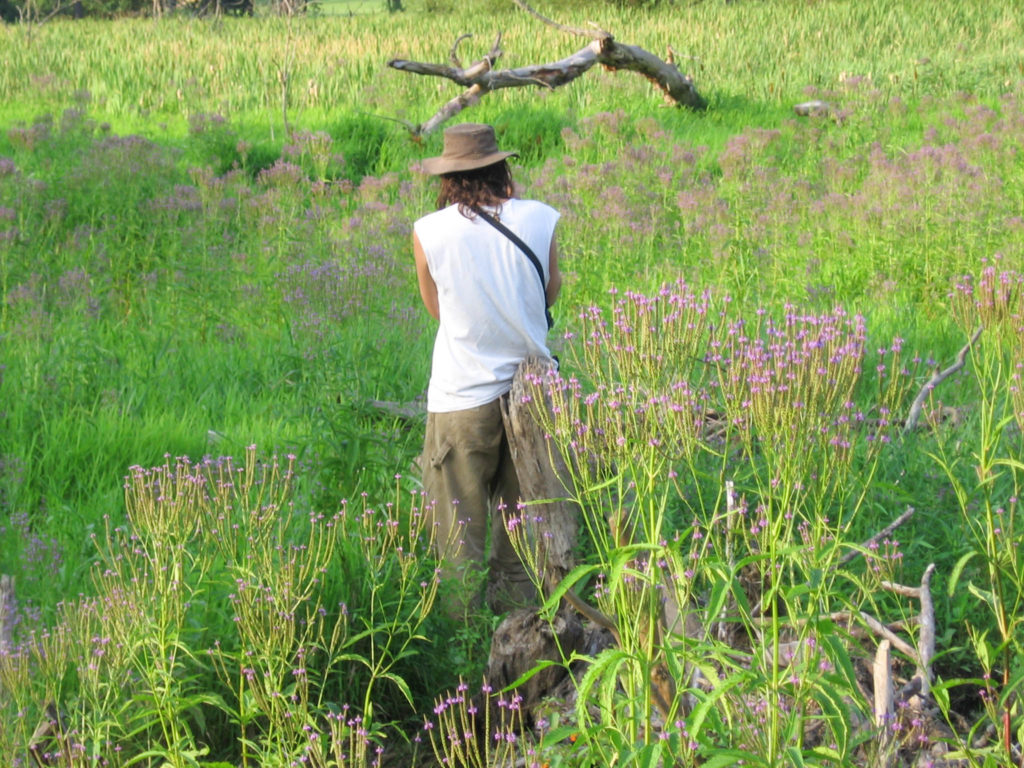
Introduction
This is an update to a blog I wrote many years ago.
I want to start off by saying I think Blue vervain is one of the prettiest plants of our region, especially in large stands blooming over a wetland expanse.
I have been using Blue vervain as a medicinal plant for many years and consider it a safe, non-sedating nervine,
The focal
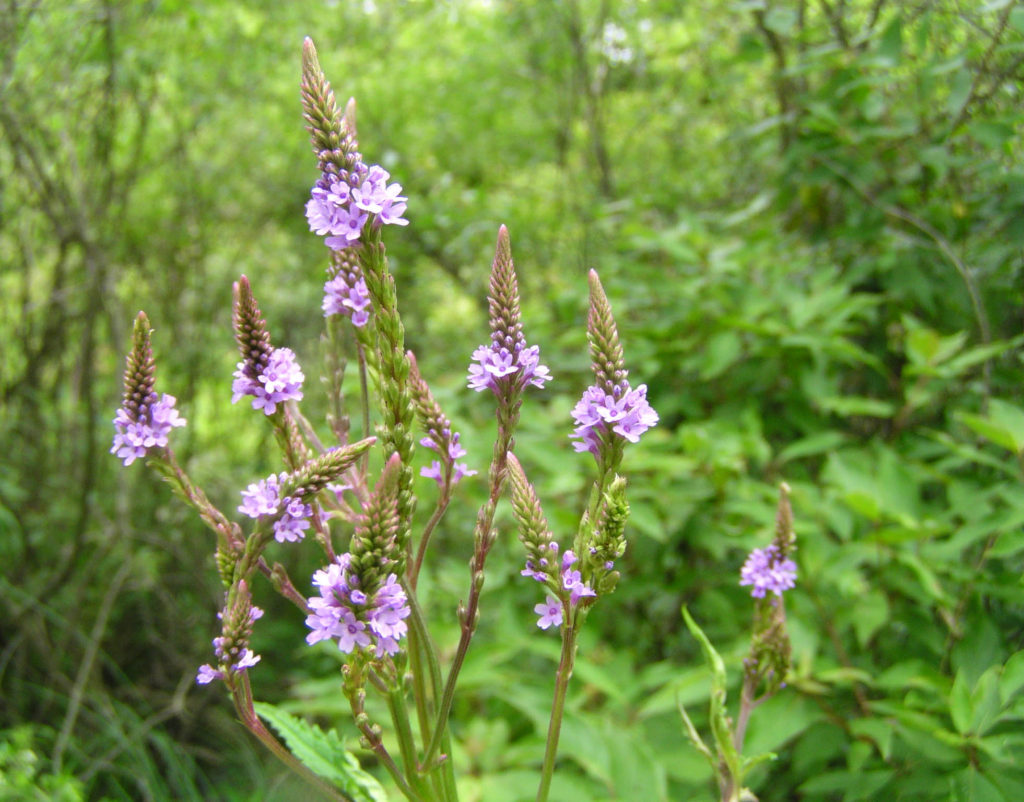
Botanical Notes
Blue vervain and the other plants in this blog are in the Verbenaceae (Vervain family). Due to taxonomic revisions, some plants have been moved from this family into the Lamiaceae (Mint family) including Vitex (Vitex agnus-castus).
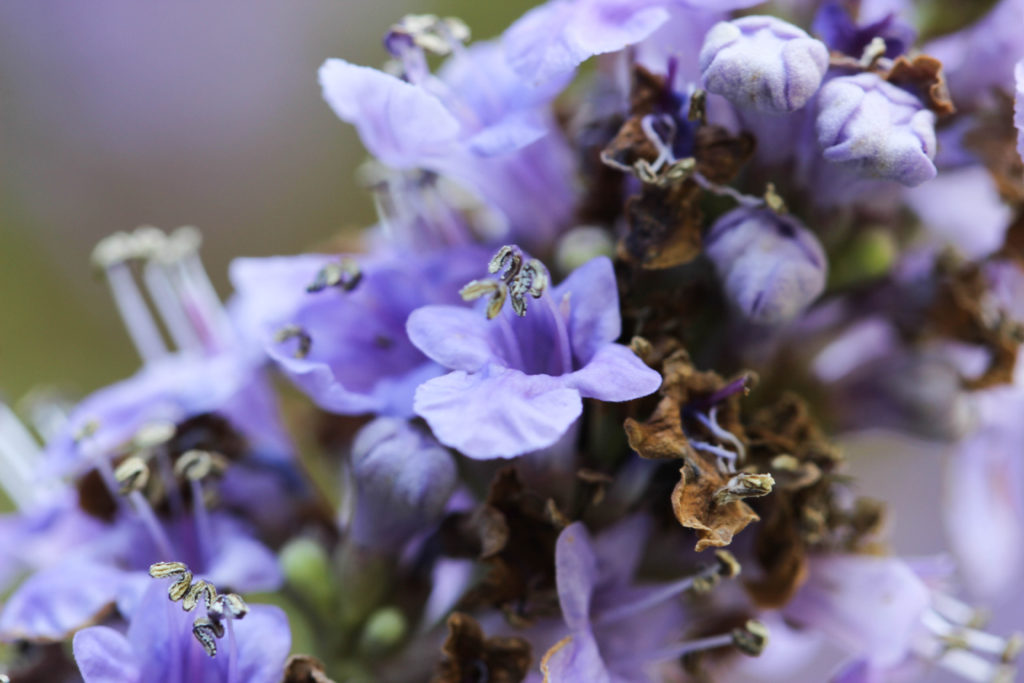
Vitex (Vitex agnus-castus, Lamiaceae) 
Vitex (Vitex agnus-castus, Lamiaceae
There are two main groups of Vervains in the US. Some of these can be visually separated based on their inflorescences (flower tops). The ‘Mock vervains’ often have a flat-topped inflorescence and are in the genus Glandularia. The ‘True v
Medicinally, the Verbenas are the ones more commonly used medicinally, though some herbalists also use plants in the genus Glandularia.
Glandularia species (formerly Verbena)

Desert vervain (Glandularia wrightii). Big Bend, TX 
Mock dakota vervain (Glandularia bipinnatifida). Superior, NM 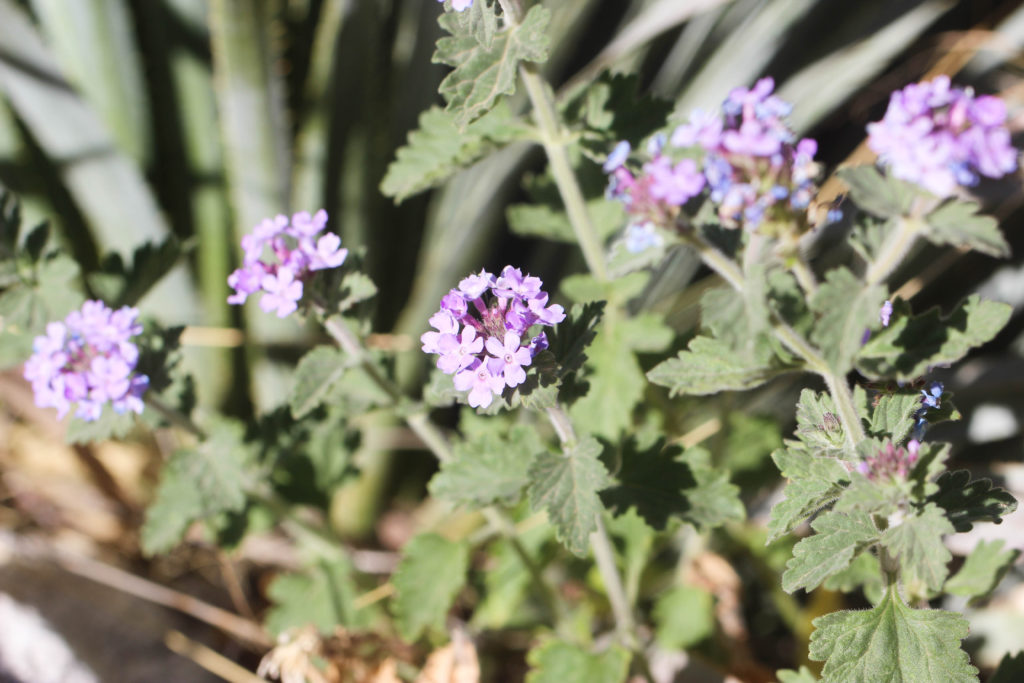
Mock vervain (Glandularia gooddingii). Coronado NF, AZ 
Mock dakota vervain (Glandularia bipinnatifida). Reserve, NM
Other Interesting Plants in the Verbenaceae
There are other attractive and interesting genera in the Verbenaceae. Lemon verbena (Aloysia citrodora) is one of my favorite tea plants, with a best-of-lemony flavor. Another tasteful one is Aztec sweet herb, also known as Hierba dulce (Phyla [Lippia]

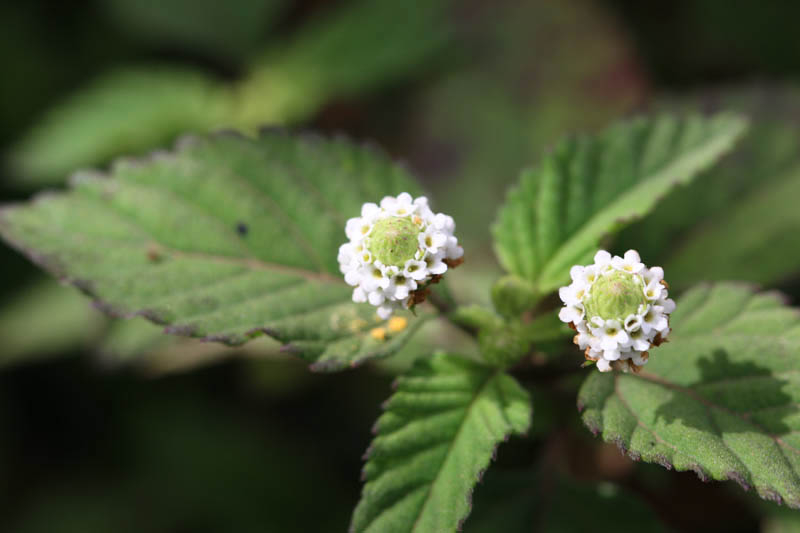
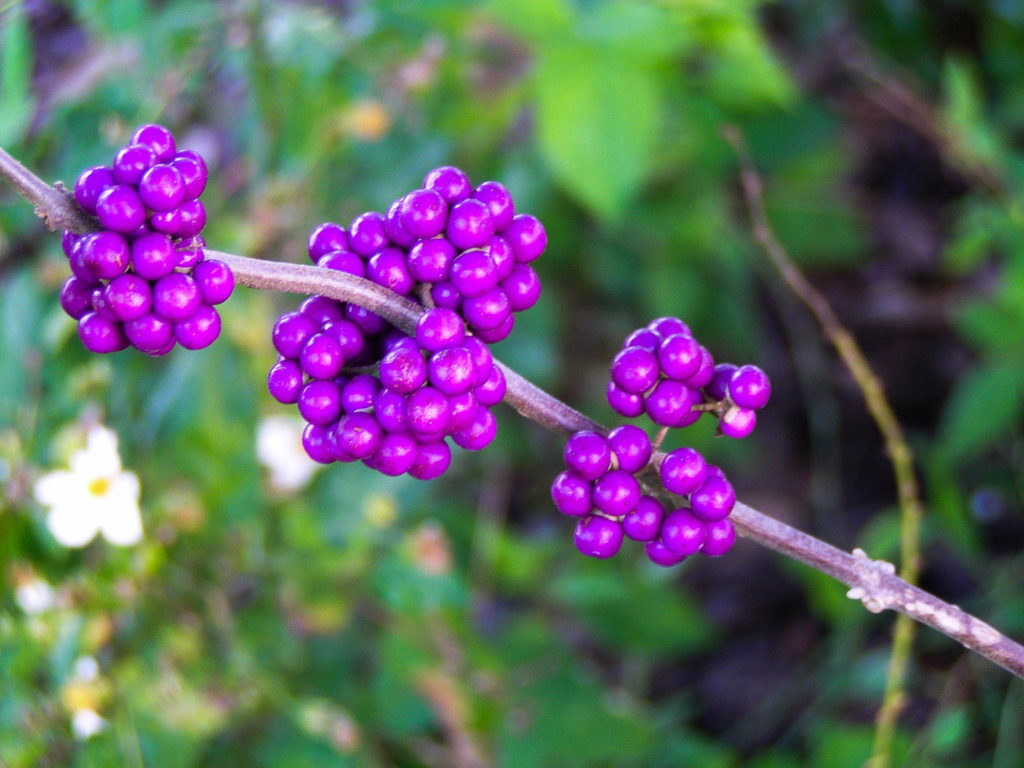
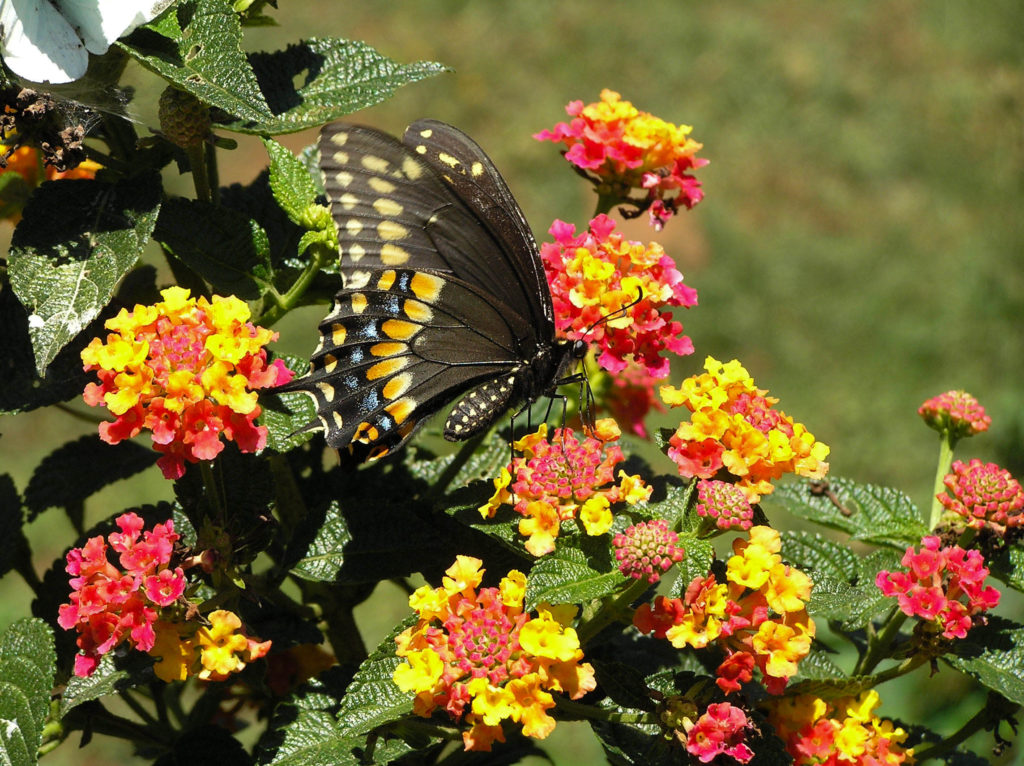
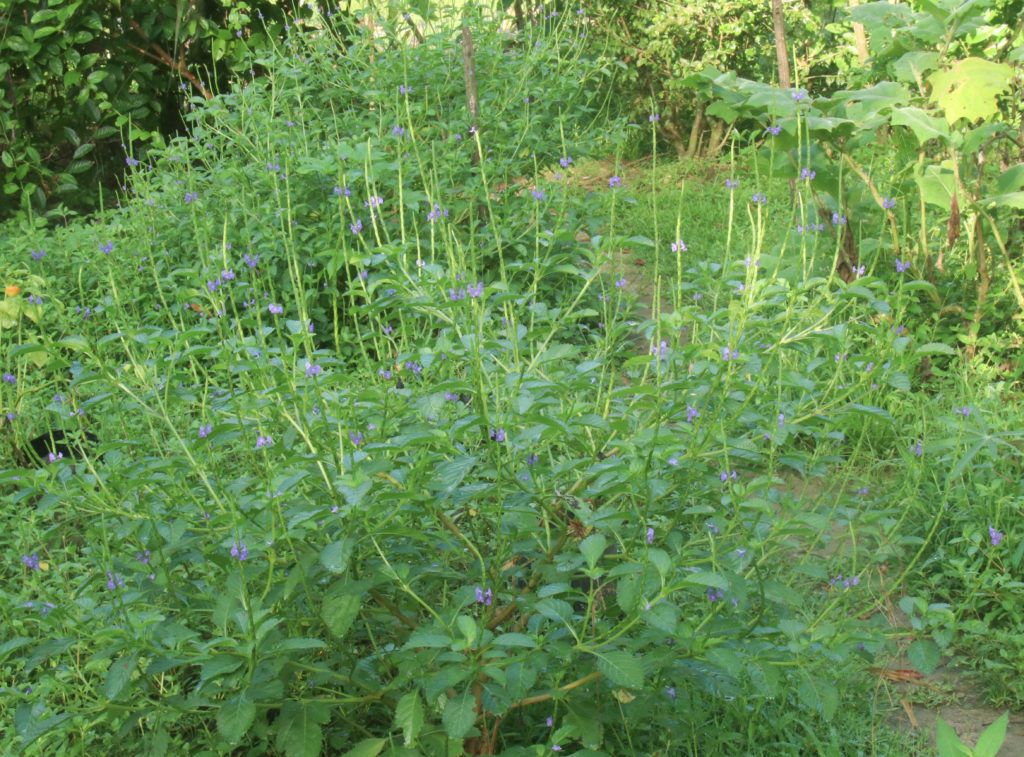
Other Verbena Species
Blue vervain seems to be the most common Verbena species currently used medicinally, though many other species are used by Indigenous Nations and with other folks where Blue vervain does not grow.

White vervain (Verbena urticifolia). Monongahela NF, WV 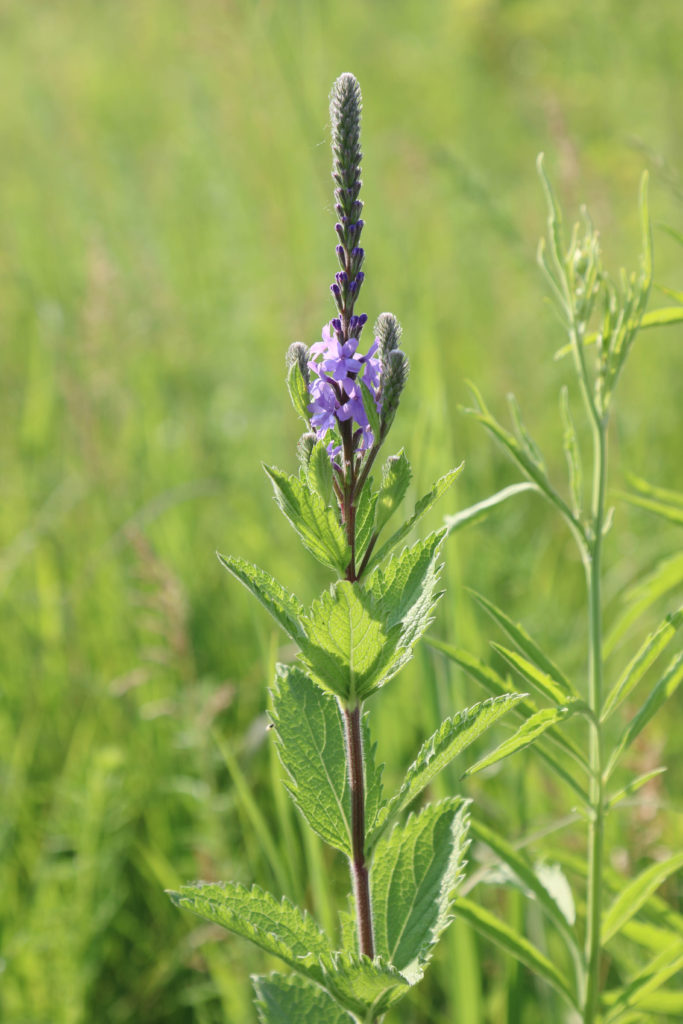
Hoary vervain (Verbena stricta). Perch Lake County Park, MN 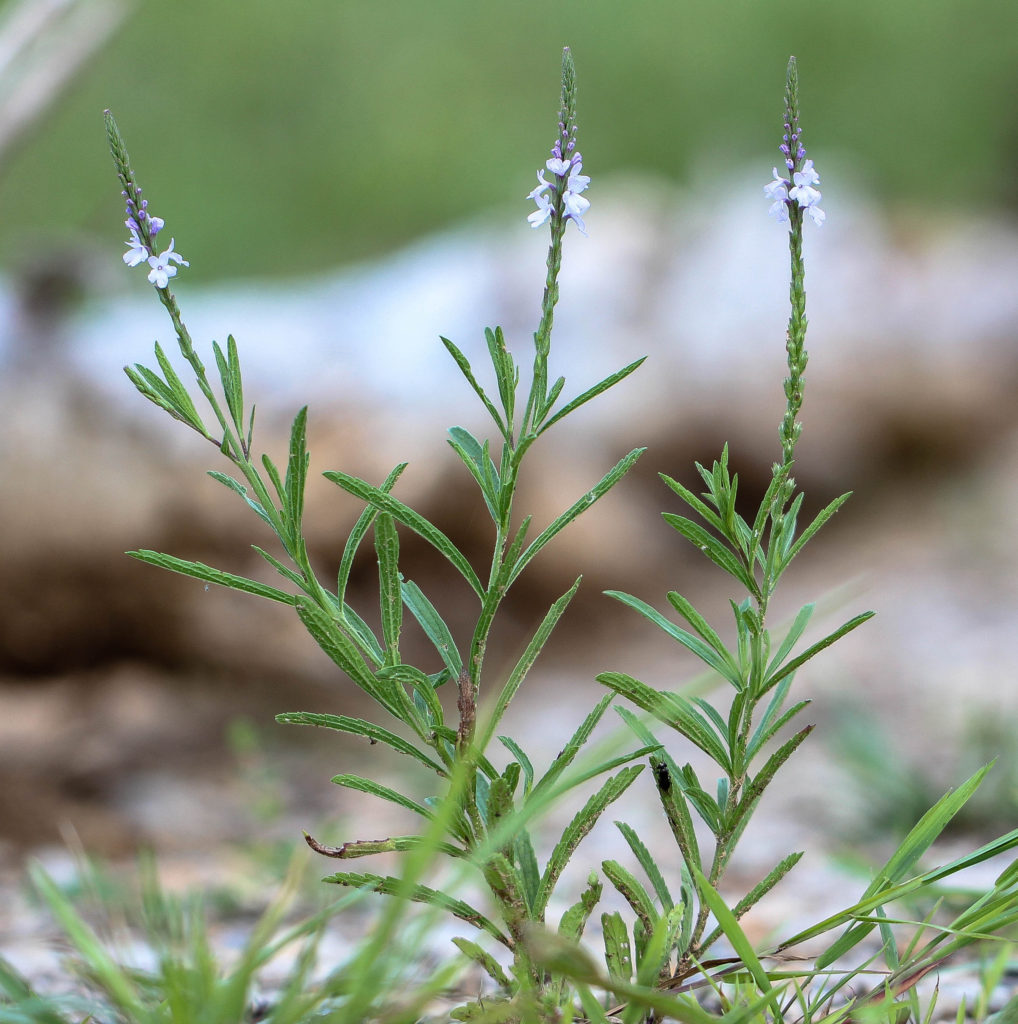
Narrowleaf vervain (Verbena simplex). Monticelloa, KY 
Hairy vervain (Verbena pumila). Big Bend, TX 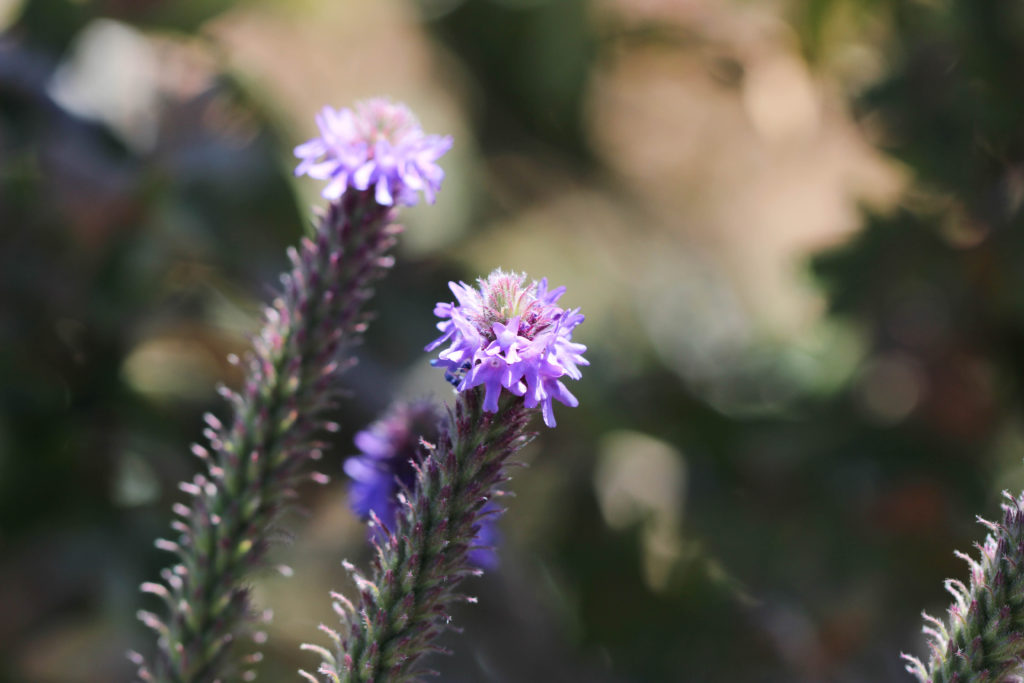
McDougals vervain (Verbena macdougalii). Grand Canyon NP, AZ 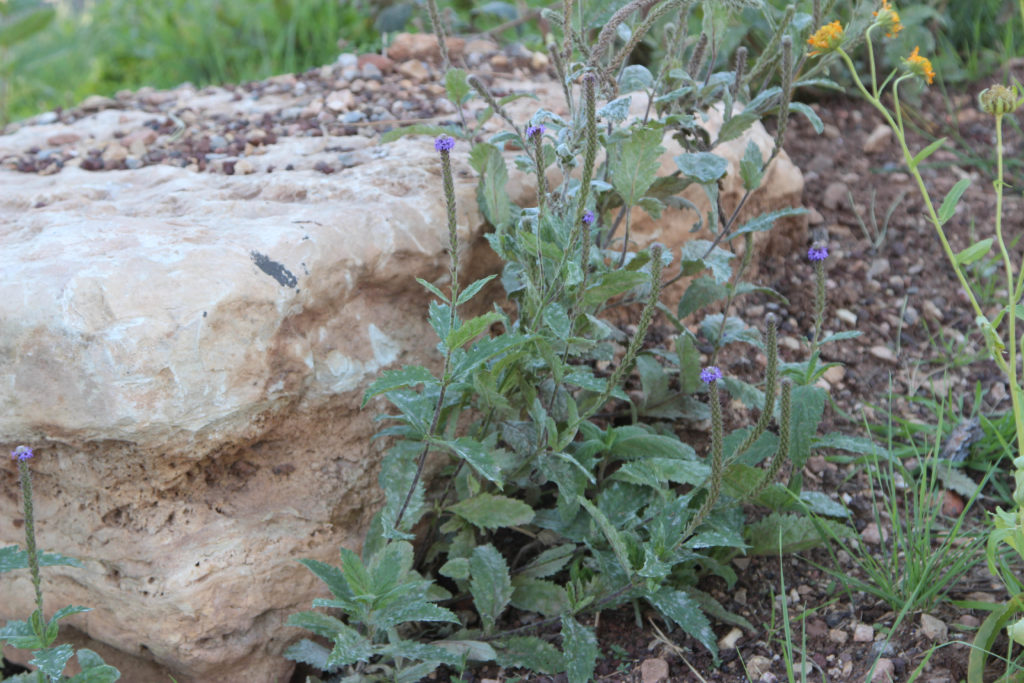
McDougals vervain (Verbena macdougalii). Grand Canyon NP, AZ 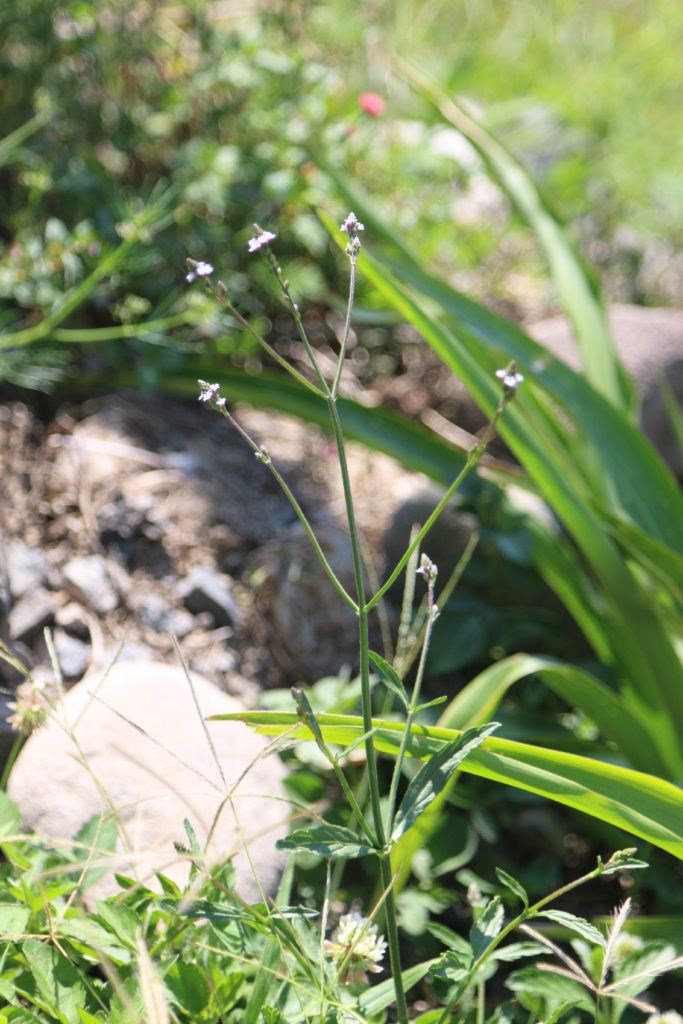
Seashore vervain (Verbena litoralis). Monteverde, Costa Rica 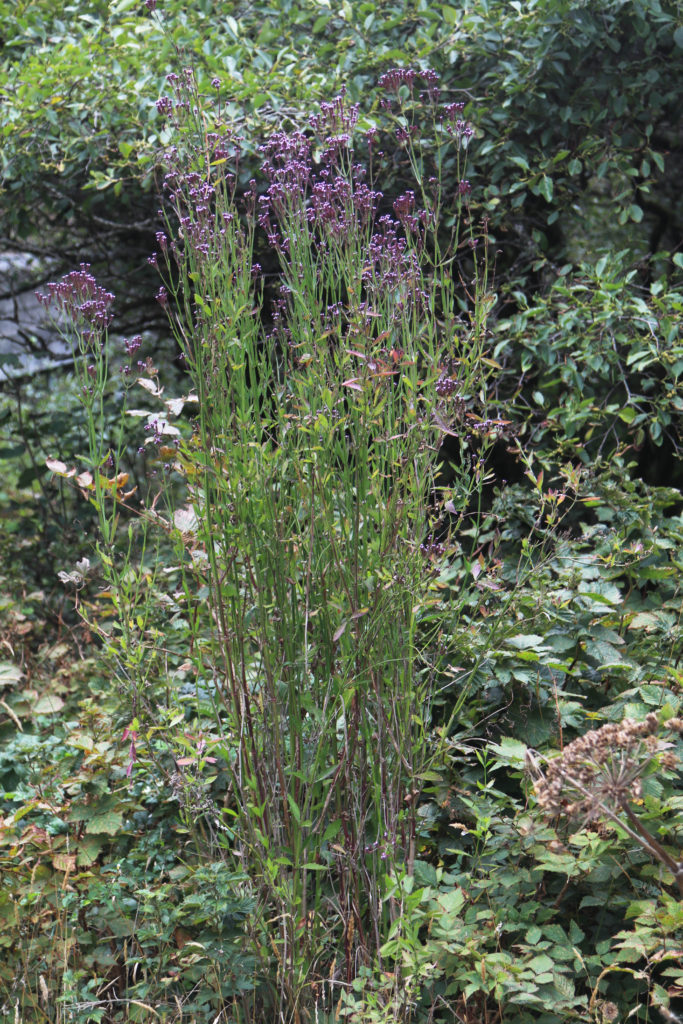
Tall vervain (Verbena bonariensis). Rt 1, CA.
European Vervain (Verbena Officinalis)
European vervain, or known simply as ‘Vervain’ has a long history of use in the UK for both medicinal and magical uses. I planted a few plants some years ago, and since then, each year a few come up between the flagstones (see photos). What is surprising is that while they do not get very big, they survive getting stepped upon on a regular basis. Tough little plants they.
I have used it similarly to Blue vervain but not nearly as often. I inquired among my herbalist friends how they use it, and here are some of the ways they employ it.
There are many medicinal similarities between V. officinalis and V. hastata, as they share similar uses concerning anxiety, agitation and tension. It is used as a general nervine for anxiety, and a long-term tonic for people who hold onto ideals or thoughts too strongly, making any sort of change difficult. Like Blue vervain, it can help quiet the mind especially if taken regularly.
European vervain is also used for PMS and menopausal symptoms including headaches, irritability and mood swings. Another use is for people who have disturbed sleep and to help them relax into a more peaceful sleep.
It has an association with the Druids and has long been used as a sacred herb in rituals and for protection.
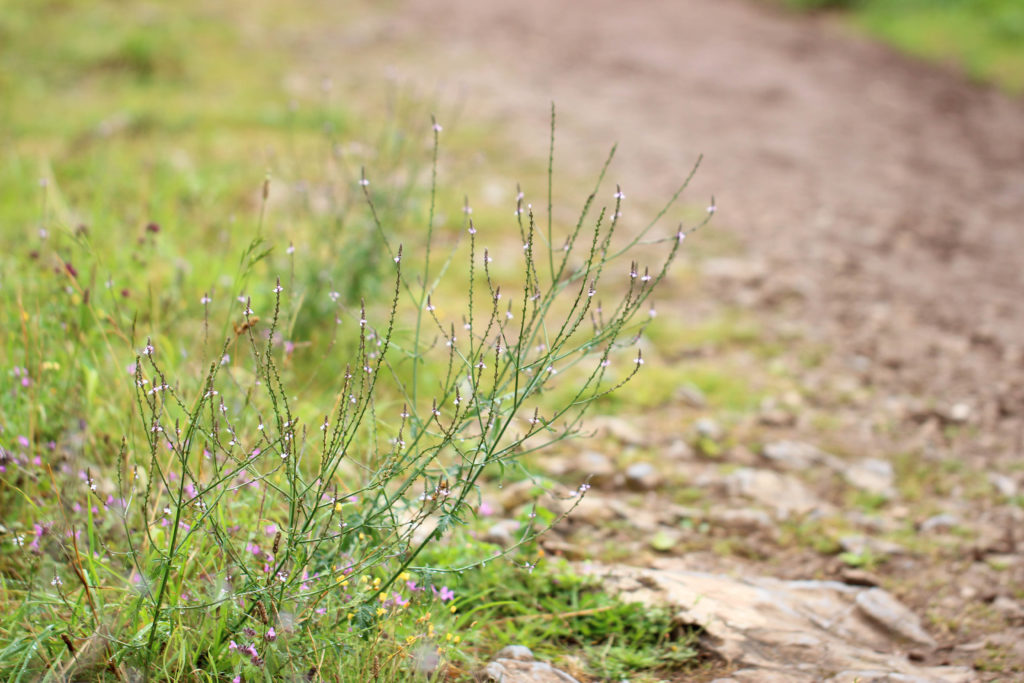
Vervain (Verbena officinalis). Cheddar, England 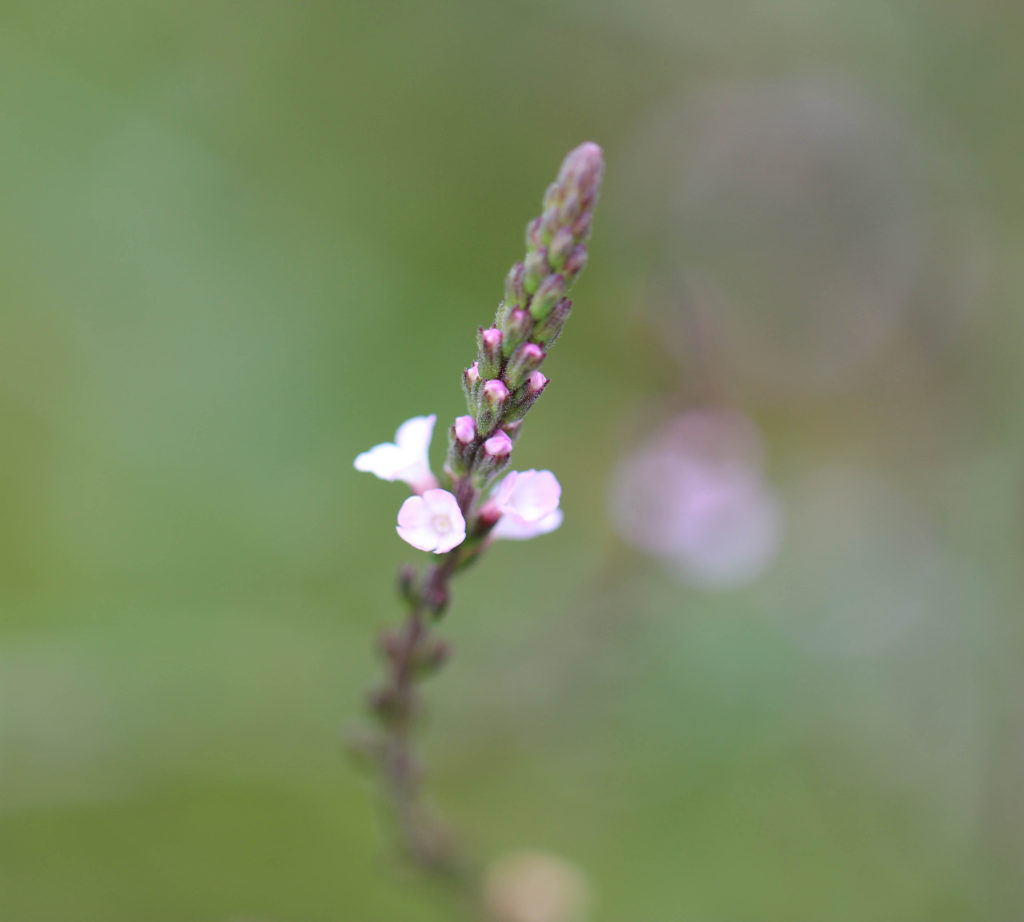
Vervain (Verbena officinalis). Cheddar, England 
Vervain (Verbena officinalis). Ithaca, NY 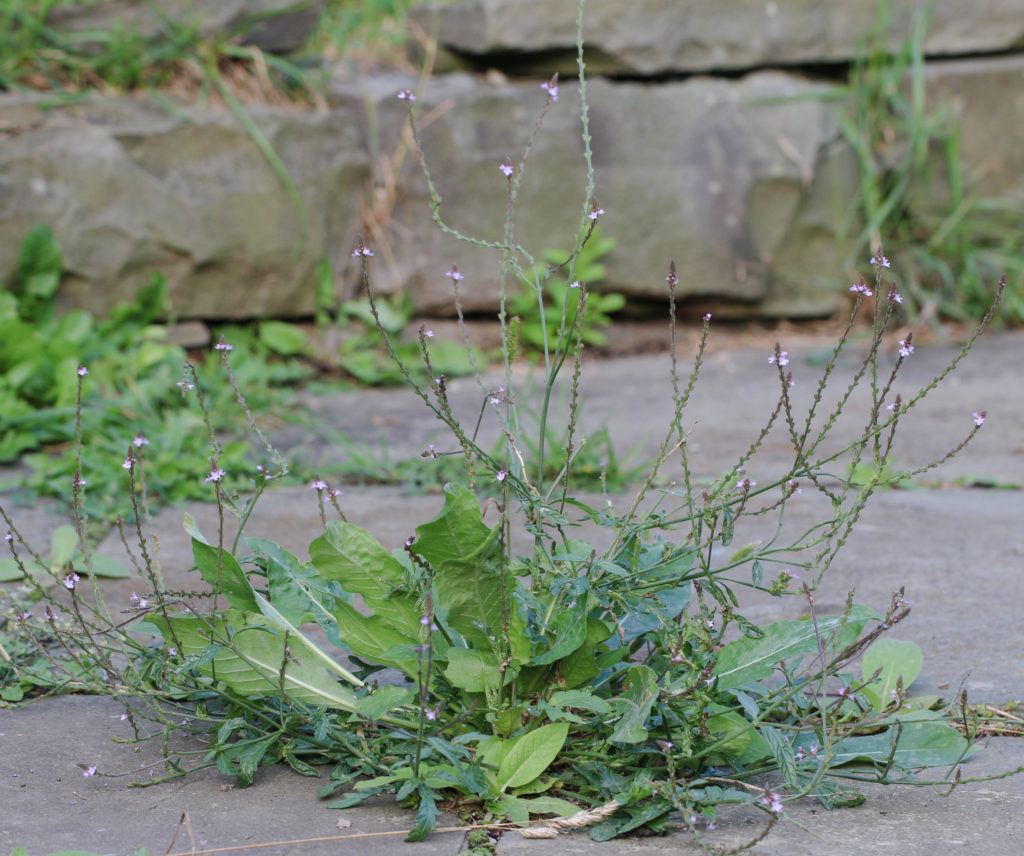
Vervain (Verbena officinalis). Ithaca, NY
Wildcrafting and Processing Blue Vervain
Blue vervain grows in a variety of habitats, though I most often see it in wetland environments, especially in marshes and alongside streams and ponds. While it is not uncommon, it tends to grow in scattered populations and restraint should be used when gathering these plants. Look for large stands and gather only limited amounts from each area. Generally, just the leaves and flowering tops are used, though I gather the whole plant from the base rather than cutting pieces off individual plants, which may leave them more prone to disease. Gather the plants just before and at the height of their flowering (in botany speak, this is called ‘anthesis’).
If drying the plant, I suggest using a dehydrator set to 95°F. Blue vervain tends to turn brown pretty easily, but if you dry the leaves and flowers quickly, they will hold some of their color longer. If drying on a tarp, or another similar method, dry inside in a sunny area so that dries quickly.
Once dried and properly stored, they maintain their medicinal qualities for about 3 years.
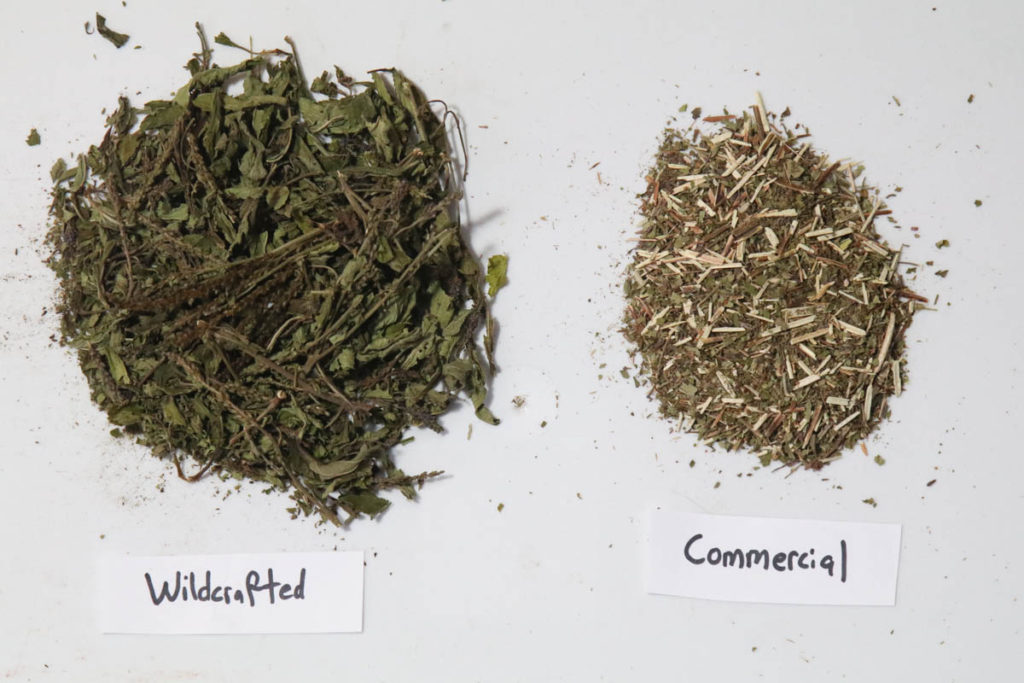
Blue Vervain Preparations
I generally use Blue vervain in tea and tincture form. The tea is quite bitter, so I suggest going light when preparing it this way. Or prepare it with less bitter plants such as Tulsi (Ocimum tenuiflorum), Damiana (Turnera diffusa) or Rose (Rosa spp.).
To prepare a tincture, you can either use fresh or dried Blue vervain leaf and flowering tops. You can see by the below photo, that the quality can vary a lot when preparing medicines, so either gather and dry it yourself or find a good source of quality plant material.
I prepare the fresh plant tincture at 1:3 in 80% ethanol and the dried tincture at 1:4 in 50% ethanol. I have not tried glycerites or other forms of this medicine yet.
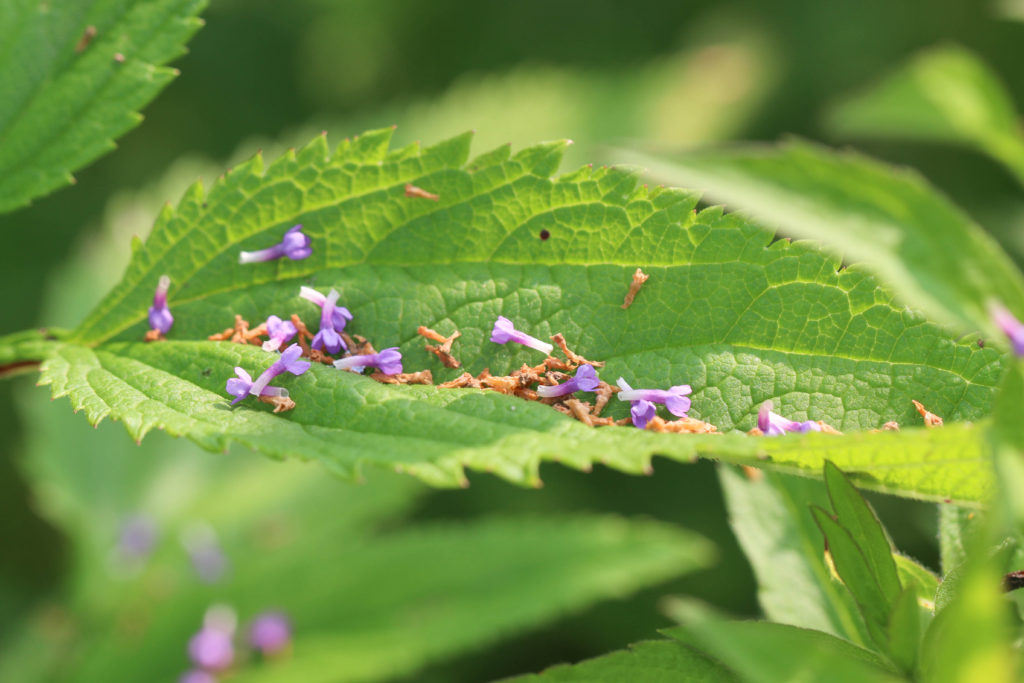
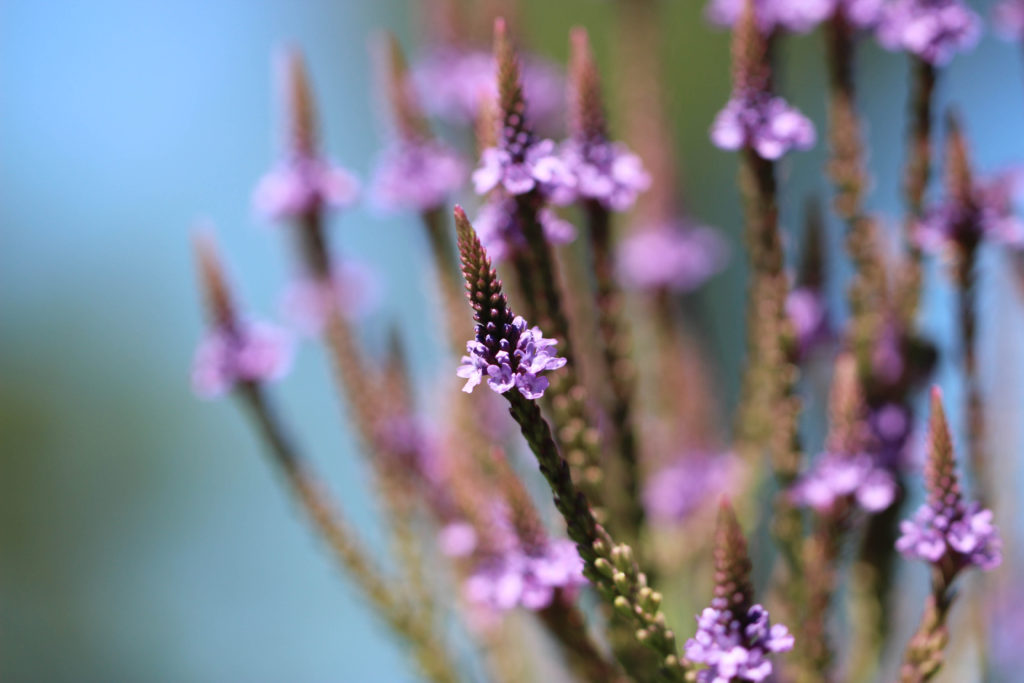
Medicinal Uses of Blue Vervain
Blue vervain (Verbena hastata) is commonly used for emotional and psychological well-being, especially for conditions relating to anxiety and feeling overwhelmed. This plant is a nervine, an herbal tonic that can be taken over a period of time to nourish the nervous system. It can also be taken as needed for acute anxiety, but its strength lies in its long-term nervous system affects.
Below are examples for those whom this plant may be helpful. But these are just illustrations and hopefully don’t limit anyone wanting to try it, especially since it is well tolerated and non-sedating.
Blue vervain can be helpful for people who feel perpetually stressed-out and may describe themselves as having frayed nerves or being tightly wound with an inability to relax.
Anxiety can be divided into two subtypes. The non-Blue vervain type: when anxious, thoughts become very scattered or one’s mind may go blank, making it difficult to make any decisions. Anxiety may bring mental fragmentation and an inability to focus. The Blue vervain type: when anxious, as when plans change abruptly, this person may become very focused and controlling and start telling everyone what to do. \
It can be difficult for them to be a good listener due to a full mind or too latched onto a specific idea to alter it in any way. Verbena hastata may also be helpful for people who have difficulty falling asleep due to active thoughts, rampant ideas, continual list-making, or plotting revenge while trying to fall asleep. Another trait is having contingency plans for their contingency plans for their contingency plans. Over-planning can make it difficult to adapt to any changes that may occur. A classic Blue vervain type are people who are habitual list makers and only feel satisfied when they have crossed everything off their daily list only to start a new one, ad infinitum.
Many of the above descriptions share similar characteristics often associated with emotional and mental health. Please use these as concepts rather than hard facts when deciding when to use Blue vervain medicinally.
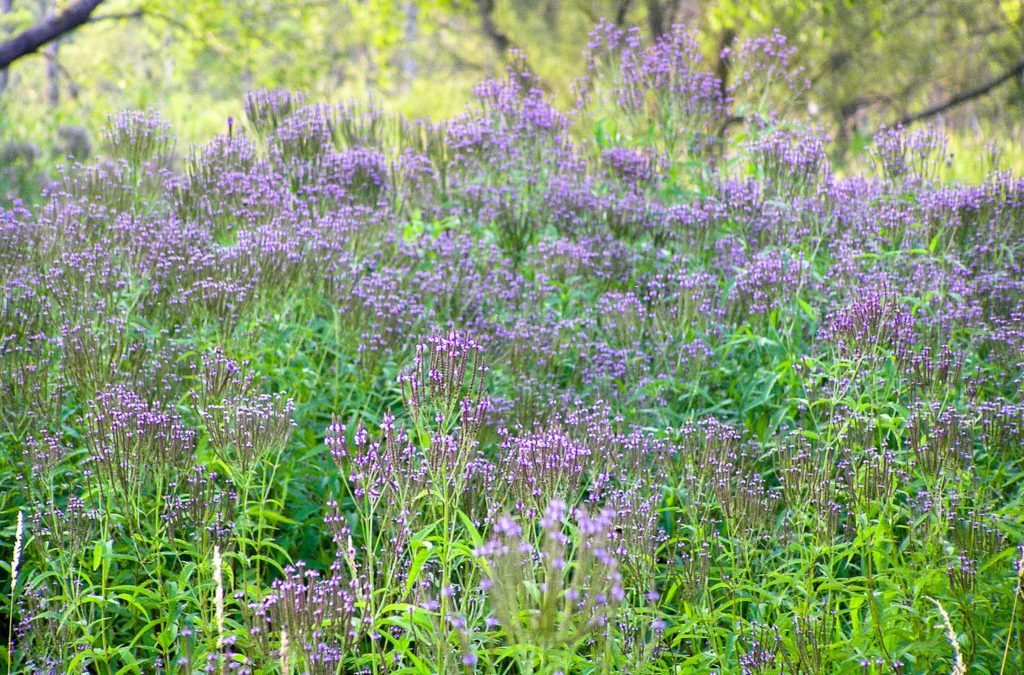
Combinations with Other Plants
Blue vervain combines well with other nerve tonics, anxiolytic (anxiety reducing) plants and sleep aids. Some other plants that help with the ‘nerves’ and anxiety include Rose flower and buds (Rosa species), Damiana (Turnera diffusa), Passionflower (Passiflora incarnata), Skullcap (Scutellaria lateriflora), Wild oats (Avena sativa) and Tulsi (Ocimum tenuiflorum).
The sleep aid plants include Hops (Humulus lupulus), Valerian (Valeriana officinalis) and Kava kava (Piper methysticum). This group of plants is generally more sedating and so it may be better to take them at night or in lower doses during the day
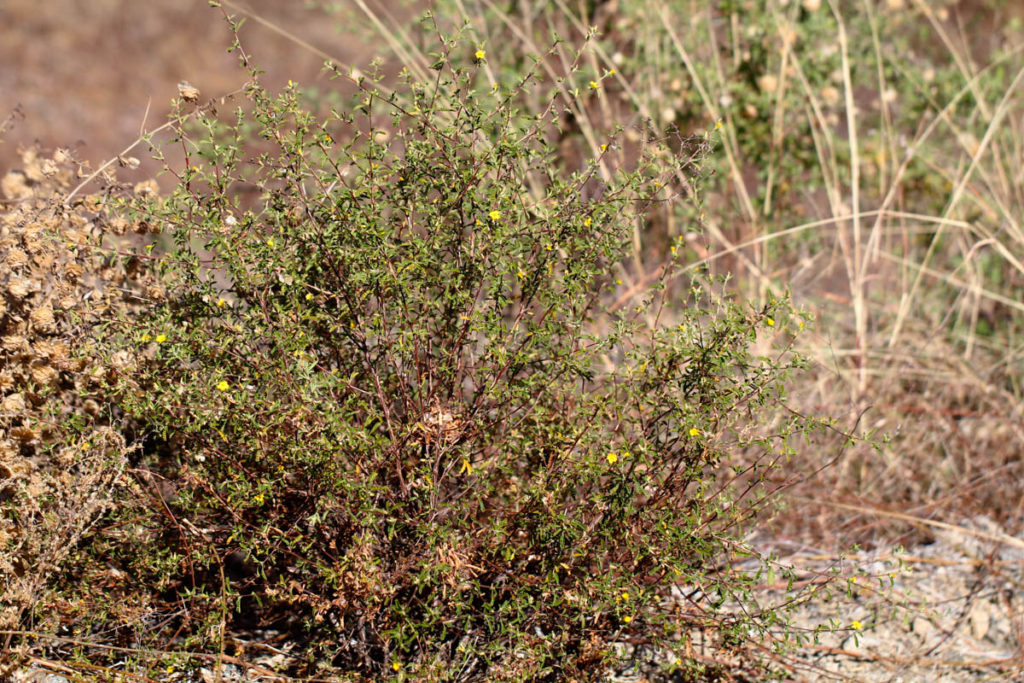

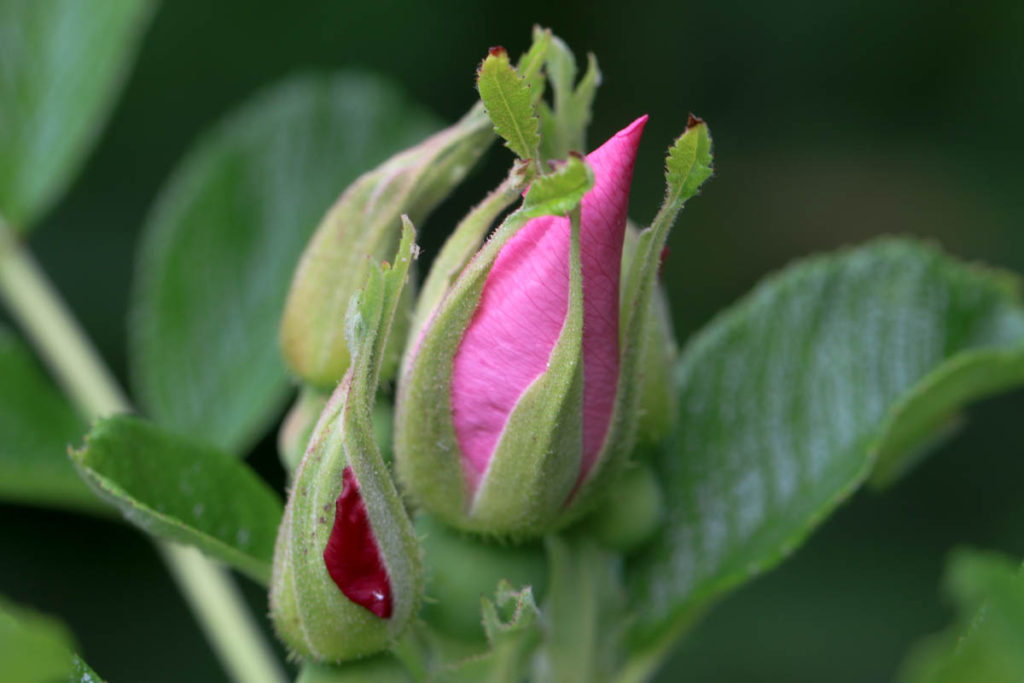
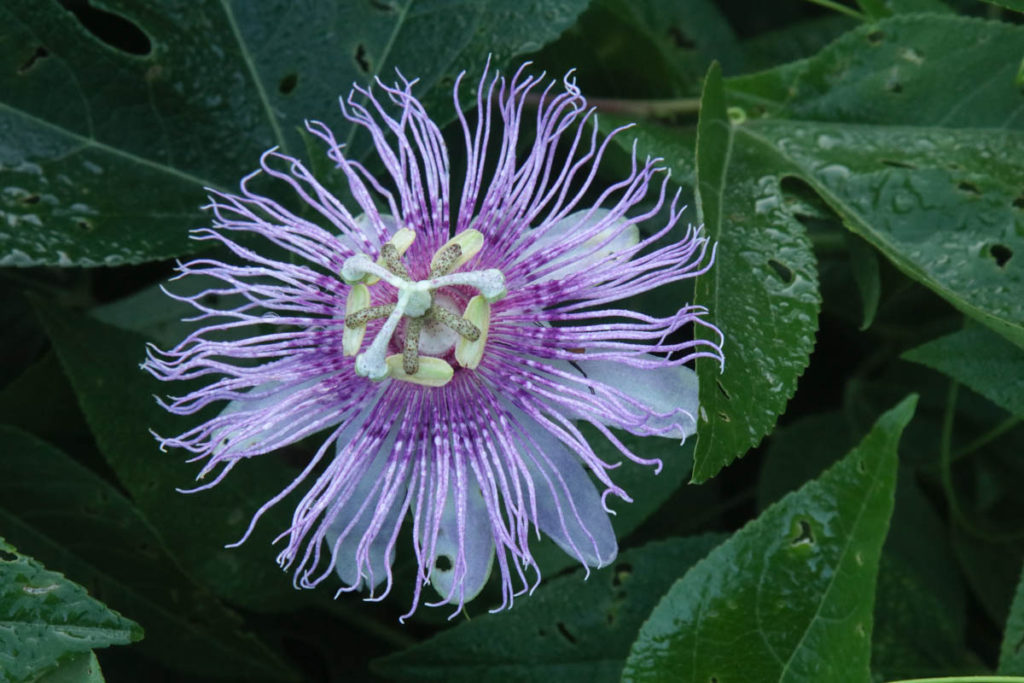
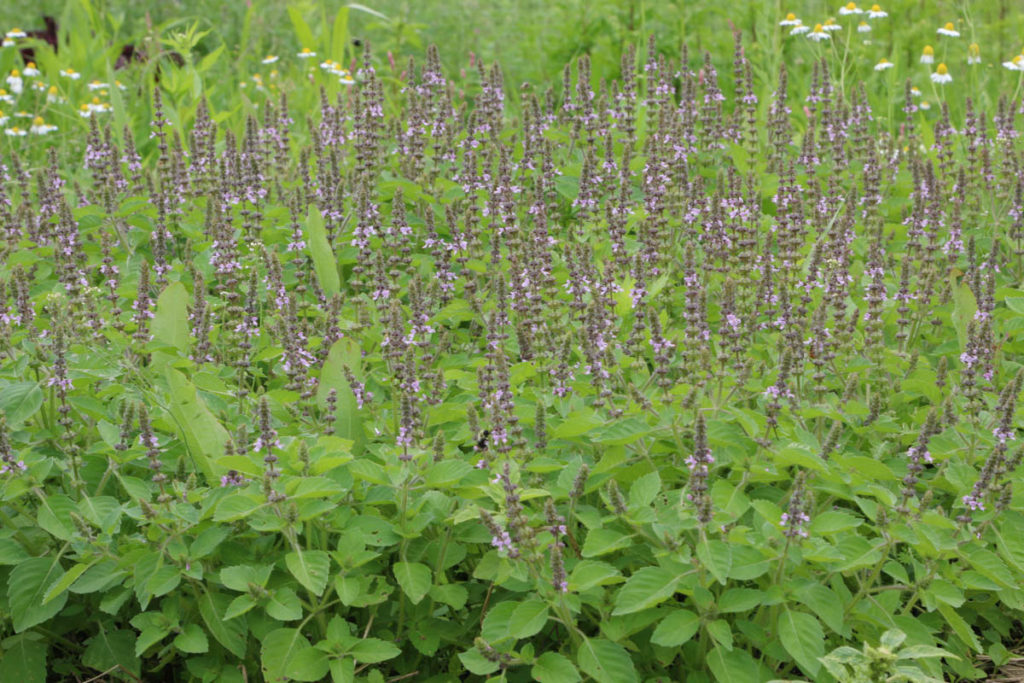
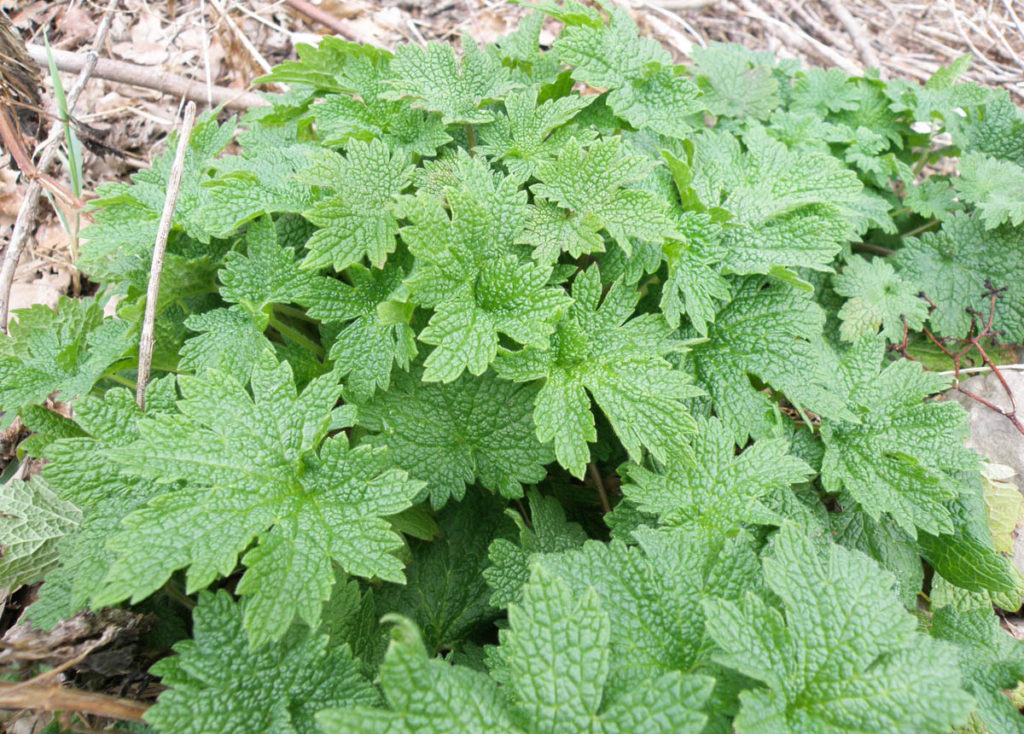
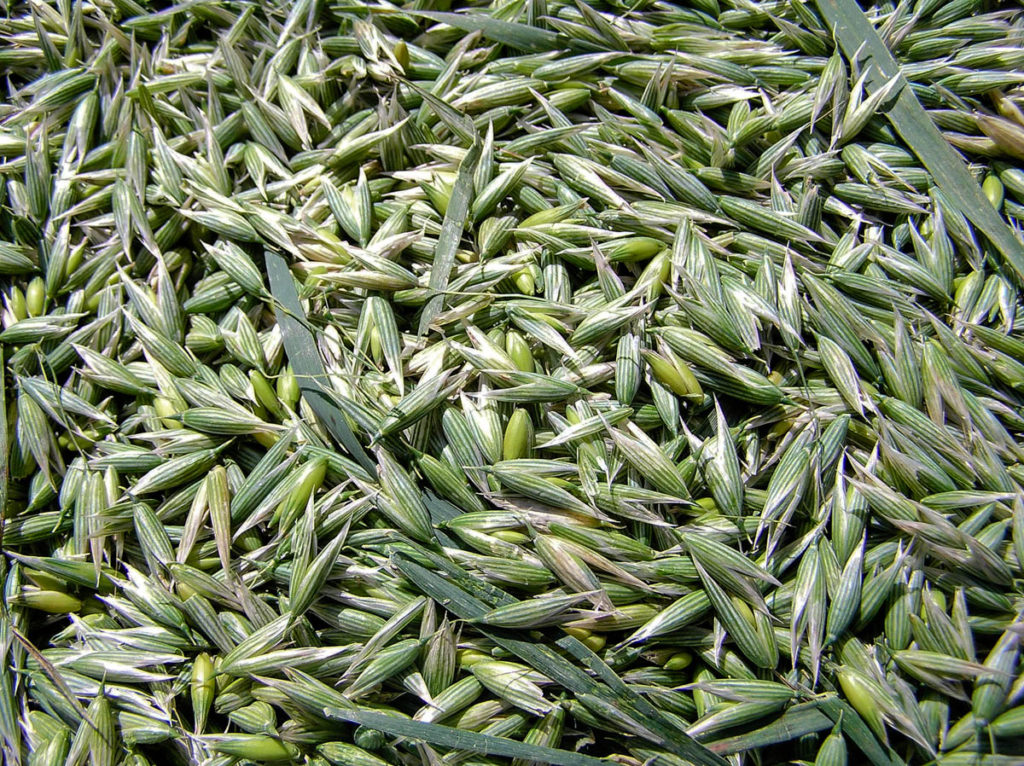
Dosages for Blue Vervain
Tea-since Blue vervain is bitter, it is helpful to pair it with more tasteful nervine plants such as Tulsi and Rose. Infuse this tea by pouring 1 quart of hot water over approximately 1 ounce of tea and letting it steep for about 10 minutes. Rose honey can be added for both it’s medicinal value and of course, the flavor.
Tincture-as a long term tonic, it is usually mixed with other nervines (see ‘Combinations’) and taken 2-4 times a day. If the tincture is only Blue vervain, take 1-2 ml (1/2-1 dropperful) per dosage. If mixed with stronger sedative herbs such as Hops, using a smaller dose may be a better daytime choice depending on one’s sensitivity to the herbs.
If the tincture is taken for anxiety a stronger dose of 2-4 ml (1 to 2 dropperfuls) can be taken as often as needed. The plant is generally non-sedating.
At first, an individual may not notice a difference in how they feel, but in a few weeks they may feel that they have better control from feeling overwhelmed or find that they react less strongly to triggers, both internal and external. I haven’t seen many negative reactions to this plant medicine, though for some people it does not help.
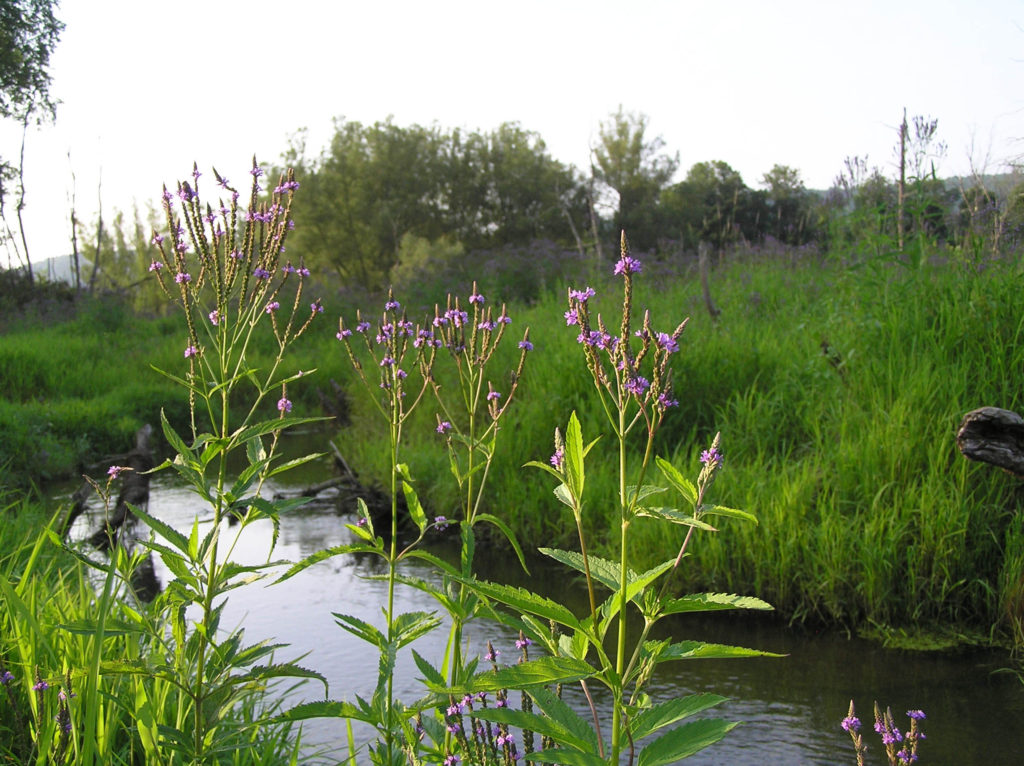
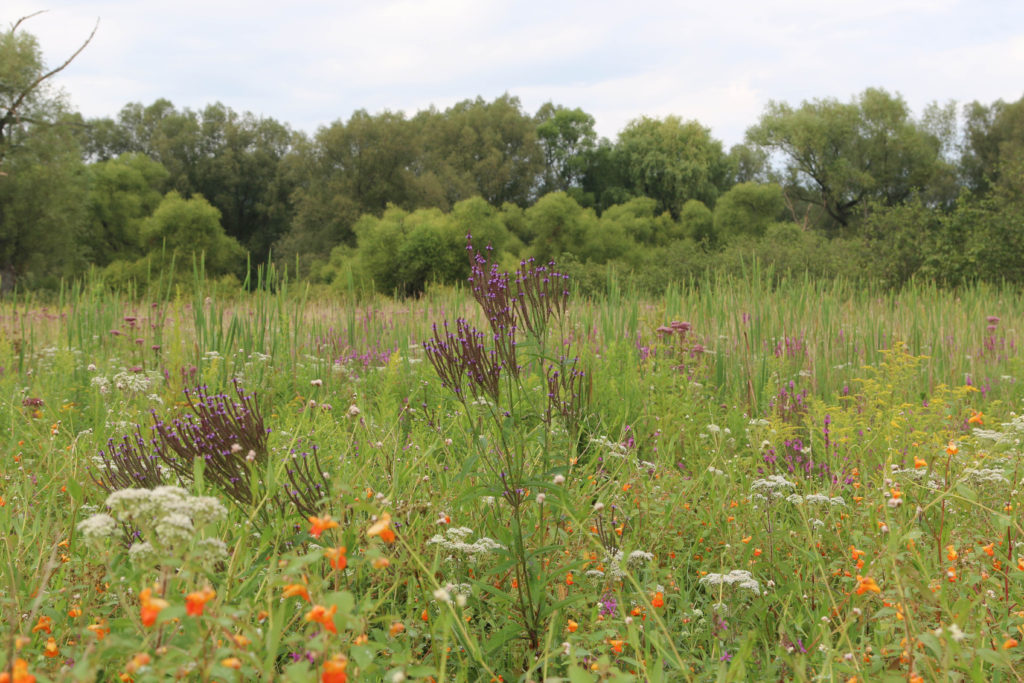
Blue Vervain Handout
This is a link to a printable Blue vervain handout
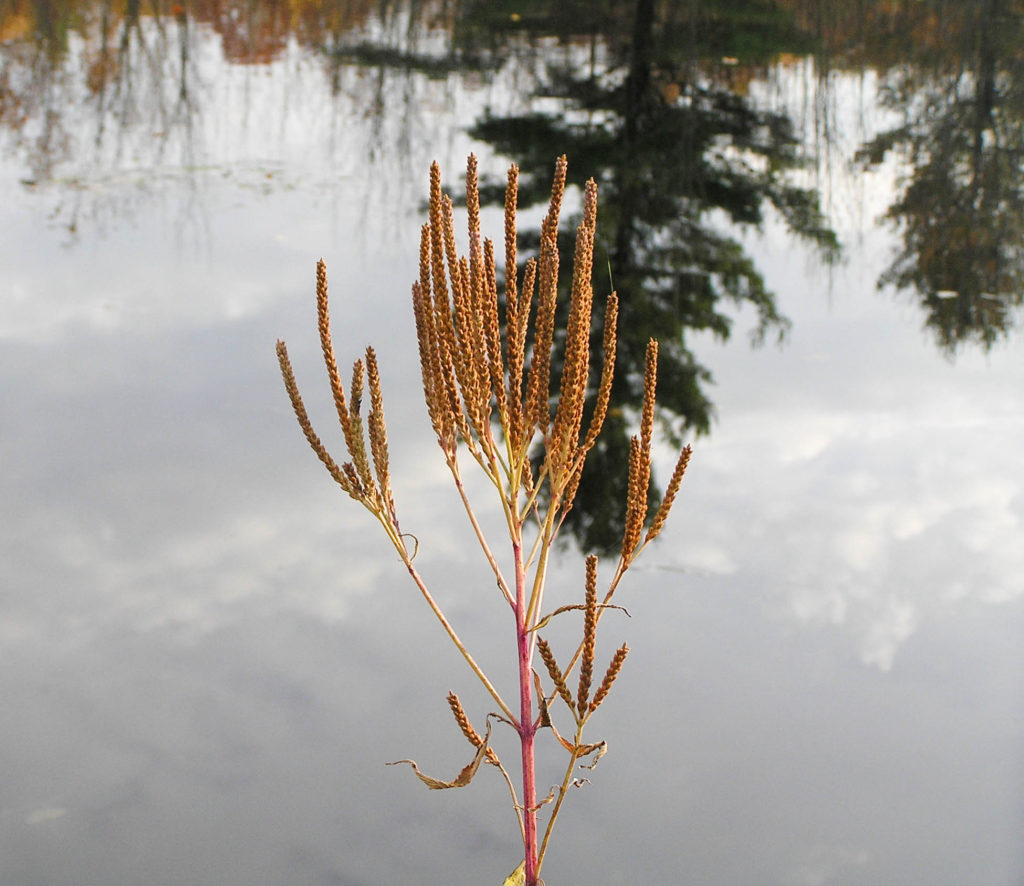
End Notes
Blue vervain is one of my favorite plants for the emotional rigors of the modern world: The incessant input of information and the quick responses that are expected of us.
Plants and other medicines are only a part of the way we can cool our thoughts and regain our emotional composure. There are numerous other techniques such as taking walks and allowing one’s mind to drift into their surroundings. Having intimate conversations with trusted friends. Playing. Hot baths with a good book. I think each of us has our own emotional release valves and these along with a good bitter cup of Blue vervain, Tulsi, Damiana with a little Rose honey can make the challenges we face more bearable.
Please leave any thoughts, comments or questions below. Thank you for reading through this blog, ~7Song
